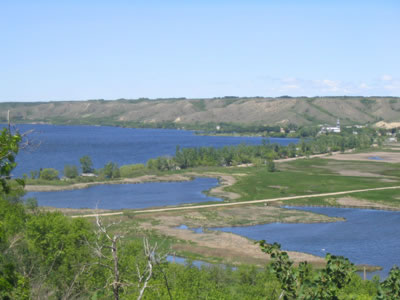
 |
|
Qu'Appelle Valley Geolog Stop 4
- Lebret Terrace
[ Previous Stop ] [ Next Stop ] Terraces are bench-like surfaces that break the continuity of the valley slope. Such terraces are remnants of former valley bottoms. In the case of the Lebret Terrace, when the Qu'Appelle Valley was formed, a layer of sand and gravel was deposited on the valley floor. Later on, a spillway eroded a portion of the sand and gravel deposits and leaving others, creating two separate levels of ground.
Unfortunately, Stop 4 has been changed by construction and urbanization of the area. Currently the Lebret Terrace is being used as a gravel pit, and there has been much disturbance and upheaval to local vegetation. Most of the plants on the terrace now are early succession plants. However behind the gravel pits, on the north side, the land has been largely undisturbed and numerous amounts of late succession plants are growing there.

Plant species found at stop 4:
|
Page last updated on
2004-10-08 |